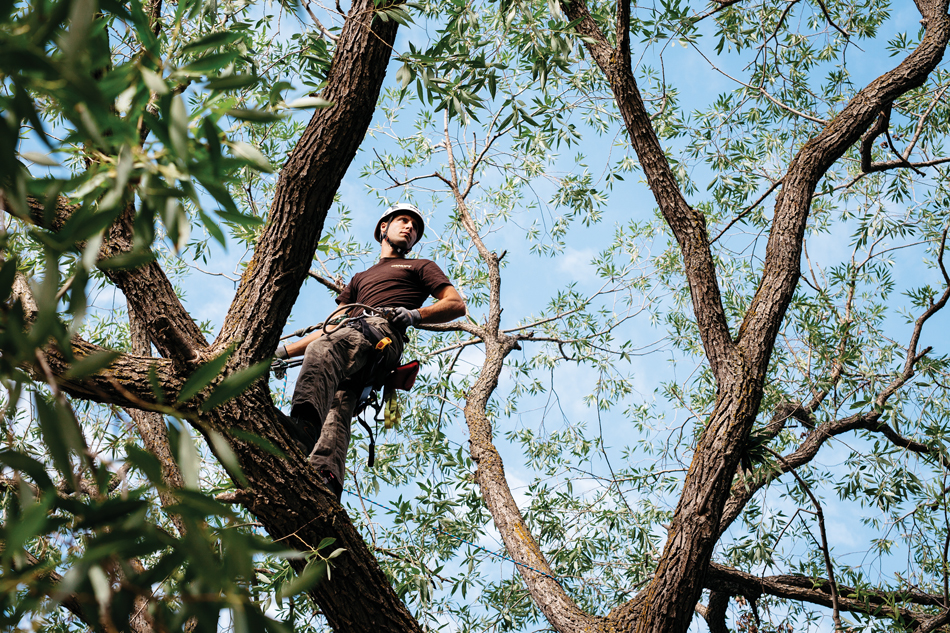
Age: 37
Experience: When Ian Jones began attending tree-climbing competitions in 2005, he simply wanted to meet the continuing education requirements for his arborist certification. He explains that he could either read books to earn his credits or take part in the competitions. Jones gravitated toward the latter.
Tree-climbing competitions are comprised of different challenges that reflect scenarios an arborist would encounter in the field. Though speed is a major factor, safety is the primary criterion. Jones competed in regional championships three times, finally taking first place in 2014 in Saskatoon.
Winning the regional competition meant that Jones would be attending the International Society of Arboriculture‘s International Tree Climbing Championship in Tampa, Fla., this past March. More than 50 arborists from across the globe converged to compete, connect and discuss new arborist equipment. Jones placed 31st overall, but came home to Edmonton with his eyes set on the next regional competition.
“When I approach a tree that I need to climb, the first thing I do is a full tree assessment. I look for hazards in the tree, like broken branches. Then I’m looking around the tree for hazards like power lines. From there, I put together a full work plan outlining how I’m going to take down the tree and ultimately keep full awareness of everything going on around the tree.
“Every tree is different, so you need to approach climbing each tree differently. A spruce tree has a strong central core and so you can tie yourself to almost any branch and brace yourself against the centre for support. Poplars, on the other hand, are wide-spreading and grow very quickly and are extremely prone to breakage, so you want to tie yourself to larger branches.
“One of the competition’s challenges, the aerial rescue, creates a hypothetical situation where a climber in a tree gets hurt and it’s your job to get them out of the tree safely. In that situation, you call 9-1-1, you do a tree assessment and you keep talking to the guy in the tree. Then, you climb into the tree and get the guy down. Paramedics don’t have high-angle rescue training. Firemen don’t have tree-climbing training. So we need to make sure these incidents are resolved safely.
“There’s a common tree in Alberta called the columnar aspen. They’re tall and super-skinny trees, and they bend in the wind. When you need to remove a 30-foot tree, you can’t climb very high before it’s not safe anymore. There was one tree I had to remove, it was in a backyard and I was only able to climb about halfway up. As I looked down, I noticed the shed on one side of the yard and some brick layers on the other side. It simply wasn’t safe to just let pieces drop. So I cut the tree just above me and had to hold it vertically while I slowly lowered it down.
“There are two common mistakes I see that can lead to some bad consequences. The first is new guys on the ground, they get bored as we’re in the tree cutting off pieces. They start wandering, not paying attention, and suddenly they’re in the drop zone and have a close call with a falling branch. The other common mistake I see is when someone cuts a large bit of trunk wrong. The right way is to cut on both sides and create a hinge so you can control the drop.
“You get to be very creative as an arborist. Just recently, my team had to take down a storm-damaged tree and, usually, I would use this chainsaw on an extension pole. The chainsaw was at another job, so I had to look around and think of different ways to work on this tree. I could have used a ladder to climb next to it, or I could have roped myself onto a spruce tree next to the damaged tree and swing across, but, ultimately, I used my lift truck, which was the safest and most time-efficient.”





